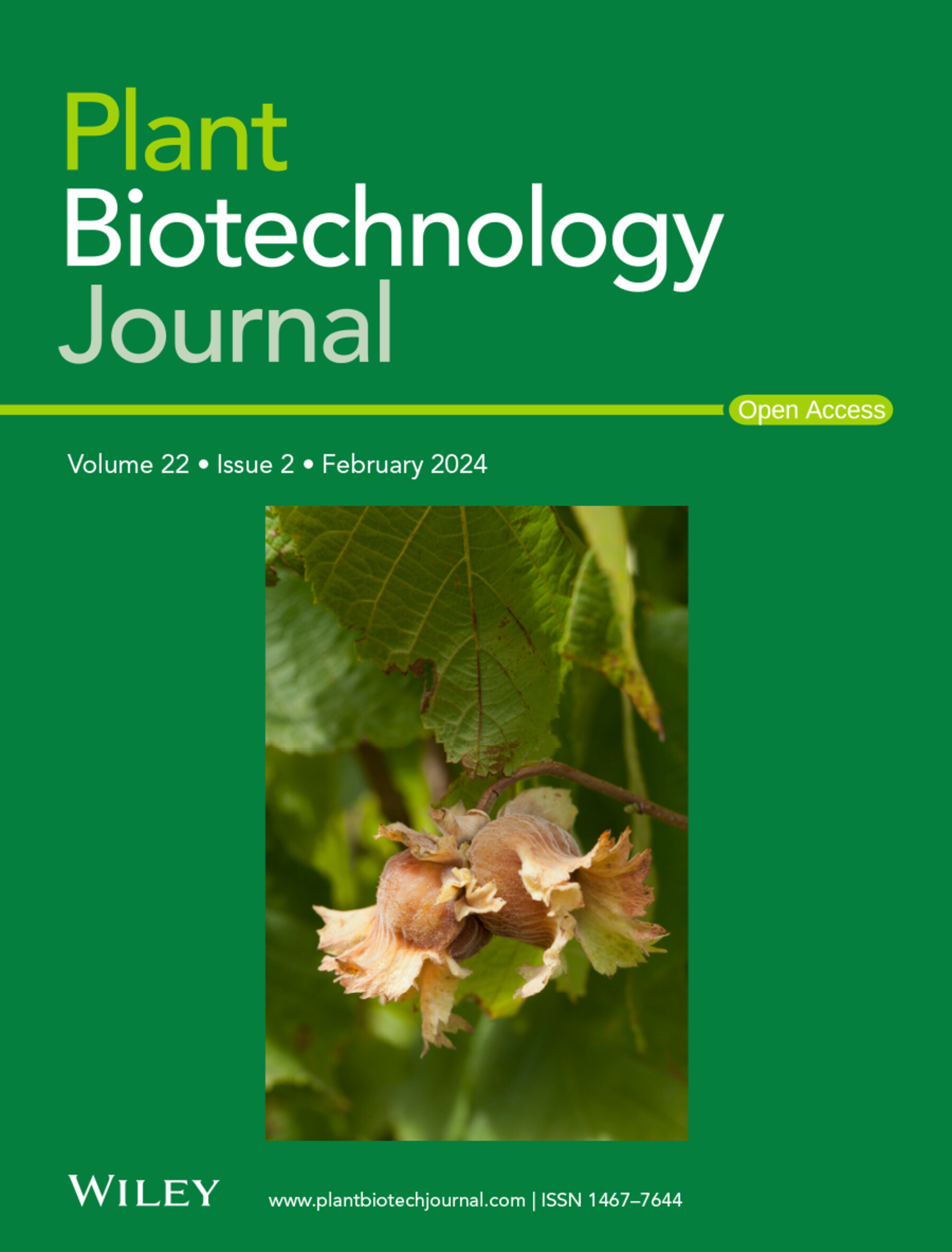OsSTK-Mediated Sakuranetin Biosynthesis and Carbon Flux Orchestrate Growth and Defence in Rice.
IF 10.5
1区 生物学
Q1 BIOTECHNOLOGY & APPLIED MICROBIOLOGY
引用次数: 0
Abstract
Plants balance resource energy allocation between growth and immunity to ensure survival and reproduction under limited availability. This study reveals that rice cultivars with elevated sucrose levels boost resistance to the fungal pathogen Magnaporthe oryzae by accumulating the phytoalexin sakuranetin, regulated by the transcription factor STOREKEEPER (OsSTK). OsSTK binds to the promoter region of OsNOMT (Naringenin-7-O-Methyltransferase) to drive sakuranetin biosynthesis. Rice overexpressing OsSTK exhibits enhanced resistance to M. oryzae and improved growth, with greater plant height and higher grain yield, achieved through optimised resource allocation and carbon flow supporting both primary and secondary metabolite production. Moreover, the identification of OsSTK haplotypes linked to functional divergence in sakuranetin-mediated resistance, particularly in high-sucrose rice cultivars, underscores OsSTK's capacity to overcome the traditional growth-defence trade-off. This work highlights OsSTK as a valuable molecular target for breeding resilient, high-yielding rice varieties capable of withstanding environmental stresses. By advancing our understanding of resource allocation through carbon flow regulation, this study offers a sustainable strategy to improve food security and promote agricultural resilience in the face of climate change.osstk介导的樱素生物合成和碳通量协调水稻的生长和防御。
植物在有限资源条件下平衡生长和免疫之间的能量分配,以保证生存和繁殖。本研究表明,蔗糖水平升高的水稻品种通过积累受转录因子STOREKEEPER (OsSTK)调控的植物抗菌素sakuranetin来增强对真菌病原体Magnaporthe oryzae的抗性。OsSTK与柚皮素-7- o -甲基转移酶的启动子区结合,驱动樱花素的生物合成。通过优化资源配置和碳流,支持初级和次级代谢物的生产,过表达OsSTK的水稻对M. oryzae的抗性增强,生长改善,株高提高,产量提高。此外,OsSTK单倍型的鉴定与樱花素介导抗性的功能分化有关,特别是在高蔗糖水稻品种中,强调了OsSTK克服传统生长-防御权衡的能力。这项工作突出了OsSTK作为一个有价值的分子靶点,用于培育能够抵御环境胁迫的高产水稻品种。通过碳流调控加深我们对资源配置的理解,本研究提出了在气候变化面前改善粮食安全和促进农业恢复力的可持续战略。
本文章由计算机程序翻译,如有差异,请以英文原文为准。
求助全文
约1分钟内获得全文
求助全文
来源期刊

Plant Biotechnology Journal
生物-生物工程与应用微生物
CiteScore
20.50
自引率
2.90%
发文量
201
审稿时长
1 months
期刊介绍:
Plant Biotechnology Journal aspires to publish original research and insightful reviews of high impact, authored by prominent researchers in applied plant science. The journal places a special emphasis on molecular plant sciences and their practical applications through plant biotechnology. Our goal is to establish a platform for showcasing significant advances in the field, encompassing curiosity-driven studies with potential applications, strategic research in plant biotechnology, scientific analysis of crucial issues for the beneficial utilization of plant sciences, and assessments of the performance of plant biotechnology products in practical applications.
 求助内容:
求助内容: 应助结果提醒方式:
应助结果提醒方式:


